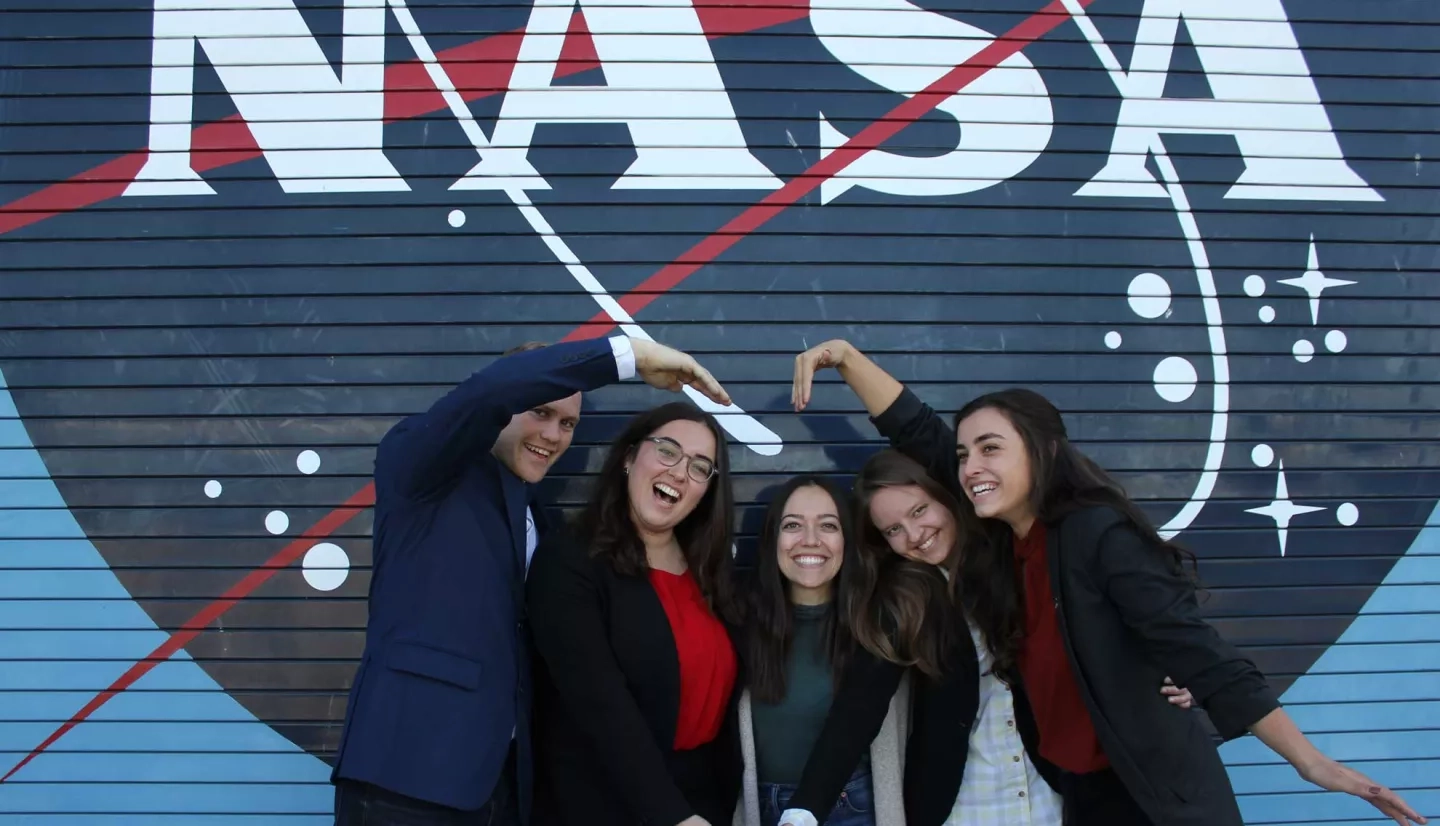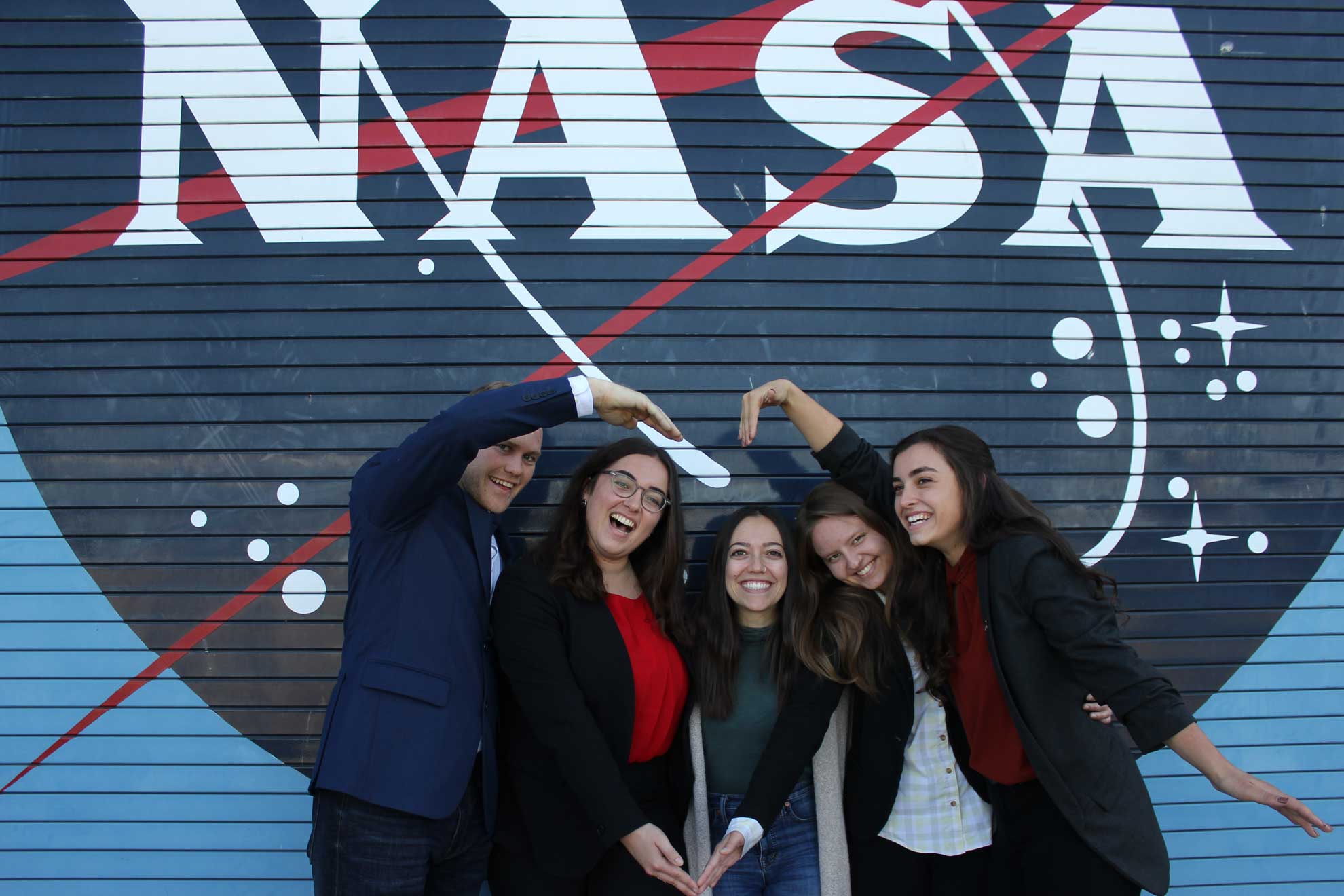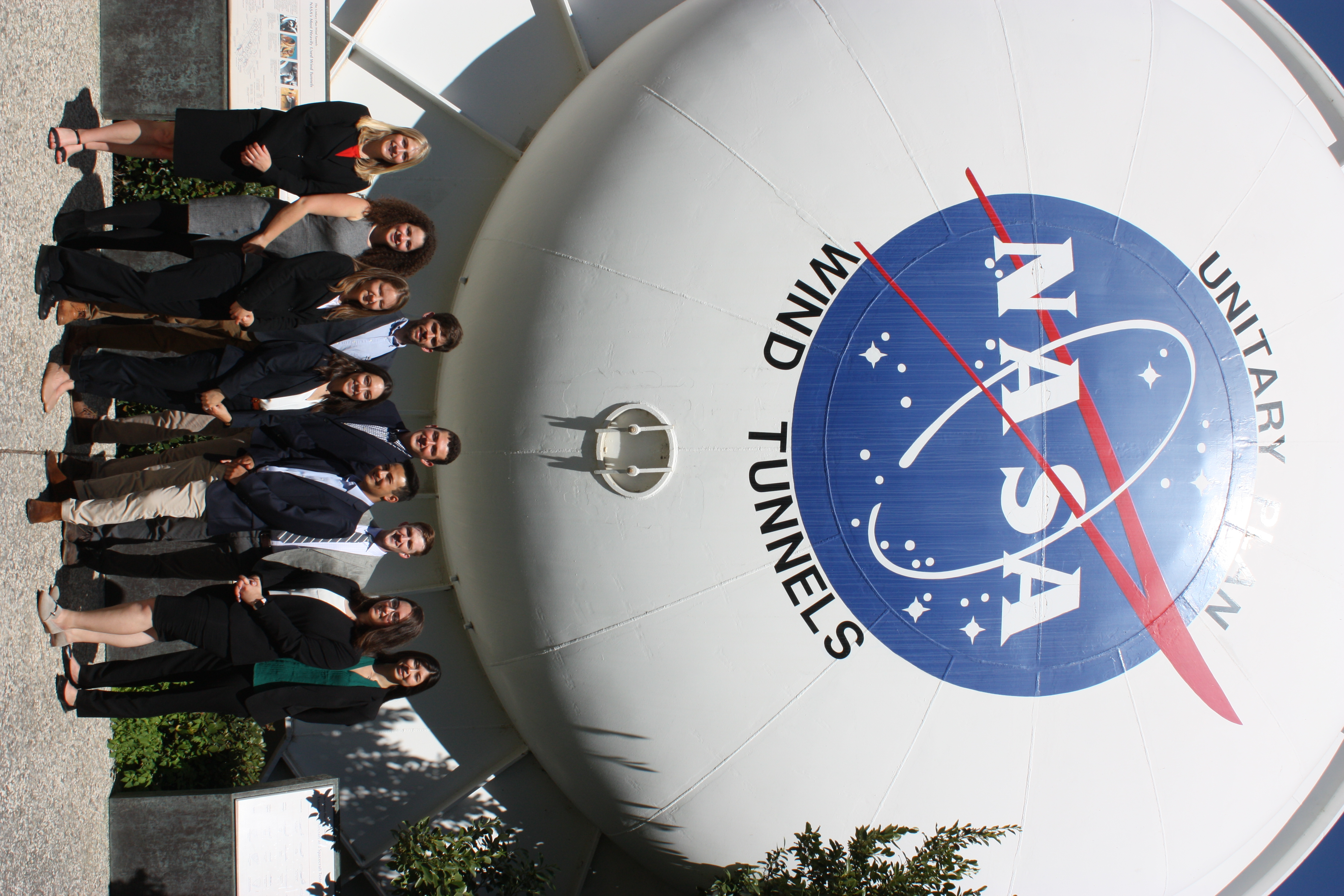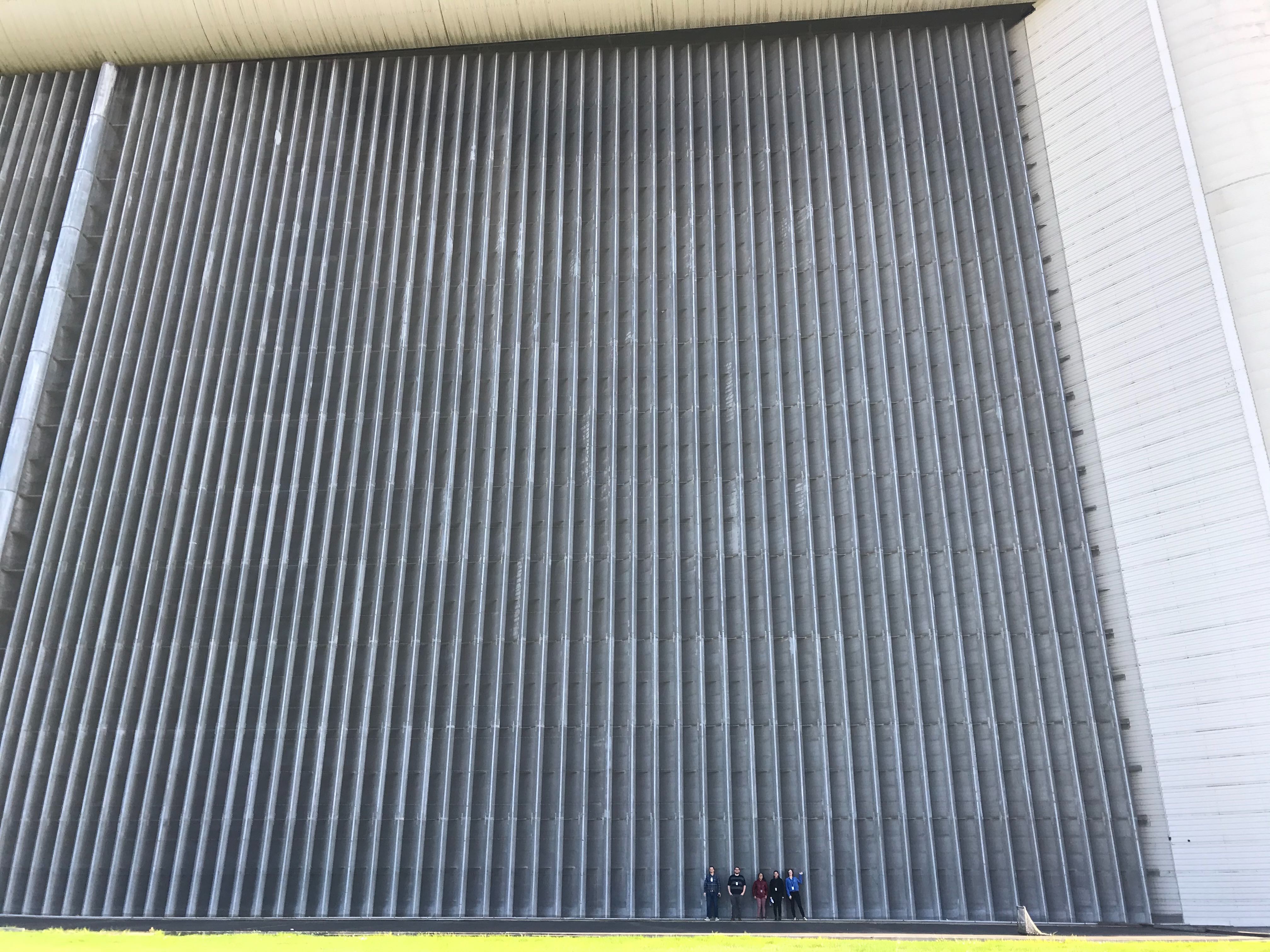The summer 2019 Belize Water Resources, Powder River Basin Transportation & Infrastructure, and American Samoa Water Resources teams in front of the Unitary Plan Wind Tunnels at Ames Research Center. Left to right: Claudia Herbert, Hayley Pippin, Sophia Skoglund, Marshall Worsham, Gina Cova, Andrew Bake, Eric Davis, Charlie Devin, Arev Markarian, and Melissa Collin. Photo credit: Gina Cova
Located in Silicon Valley among tech giants like Google, Facebook, and Apple, it’s no surprise that NASA Ames Research Center (ARC) is a major player in the fields of information technology, supercomputing, and quantum computing. The second oldest of NASA’s field centers, its rich history of research also includes aeronautics, astrobiology, small satellites, robotic lunar exploration, and thermal protection. Though modern-day research at Ames can take a variety of forms, the Center was founded for one primary purpose: wind tunnel research.
Wind tunnels are tube-like structures in which wind is produced to “fly” aircraft on the ground and conduct aerodynamic tests. Today, all aircraft, spacecraft, and reentry vehicles are tested in a wind tunnel prior to use. Ames is home to the Unitary Plan Wind Tunnel, the most active NASA tunnel at any Center. It’s also home to the 120-foot by 80-foot wind tunnel—the largest in the world, and a popular destination for NASA DEVELOP team photo-ops.
Similar to Ames standing as the second oldest NASA Center, the California-Ames DEVELOP node is the second oldest active DEVELOP location. Started in 2003, DEVELOP at Ames has hosted hundreds of participants and conducted dozens of projects over the course of its nearly 20 years. Our projects have spanned thematic applications and study areas, from projects focused on Sierra Nevada hydrologic modeling to local Bay Area urban heat island effects to monitoring water resources in Chile’s Atacama Desert.
“With scientists in remote sensing, wildfire, and air quality monitoring all located at Ames, the team has the opportunity to engage with researchers from diverse skill sets and backgrounds”
DEVELOP’s California-Ames location maintains a close relationship with the Center’s Biospheric Sciences Branch, putting invaluable science advising for participants only a moment’s notice away, no matter the project focus. For the summer 2020 term, the team is researching wildfire impacts on air quality in the Pacific Northwest and will build an online dashboard to visualize and analyze wildfire smoke. With scientists in remote sensing, wildfire, and air quality monitoring all located at Ames, the team has the opportunity to engage with researchers from diverse skill sets and backgrounds — truly the Ames way.
This summer, as the Pacific Northwest Health & Air Quality team conducts their research, there will be new and interesting technical questions to solve. But with a rich legacy of innovation and research, no challenge is too much for Ames — we were founded to blow you away.






